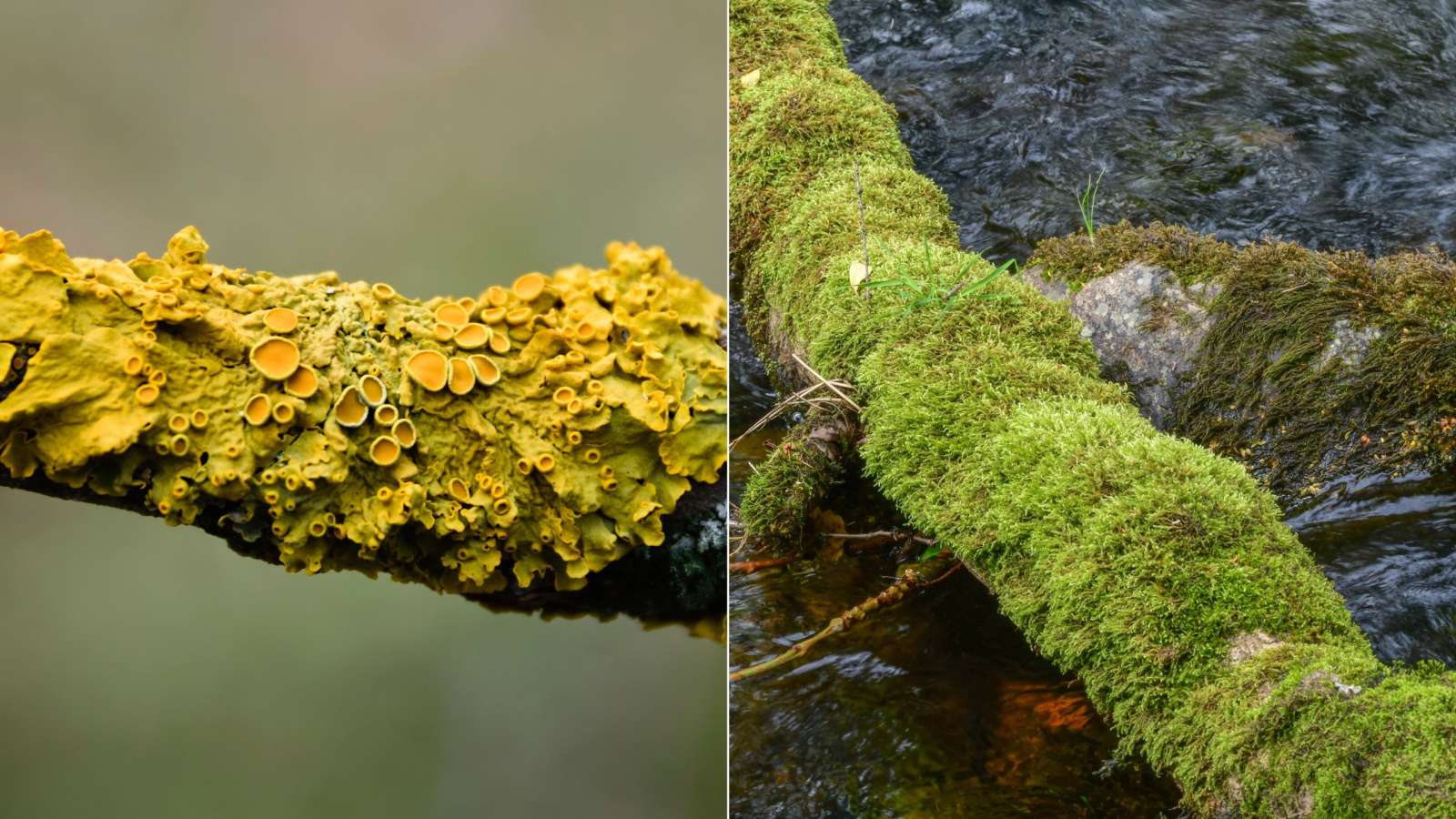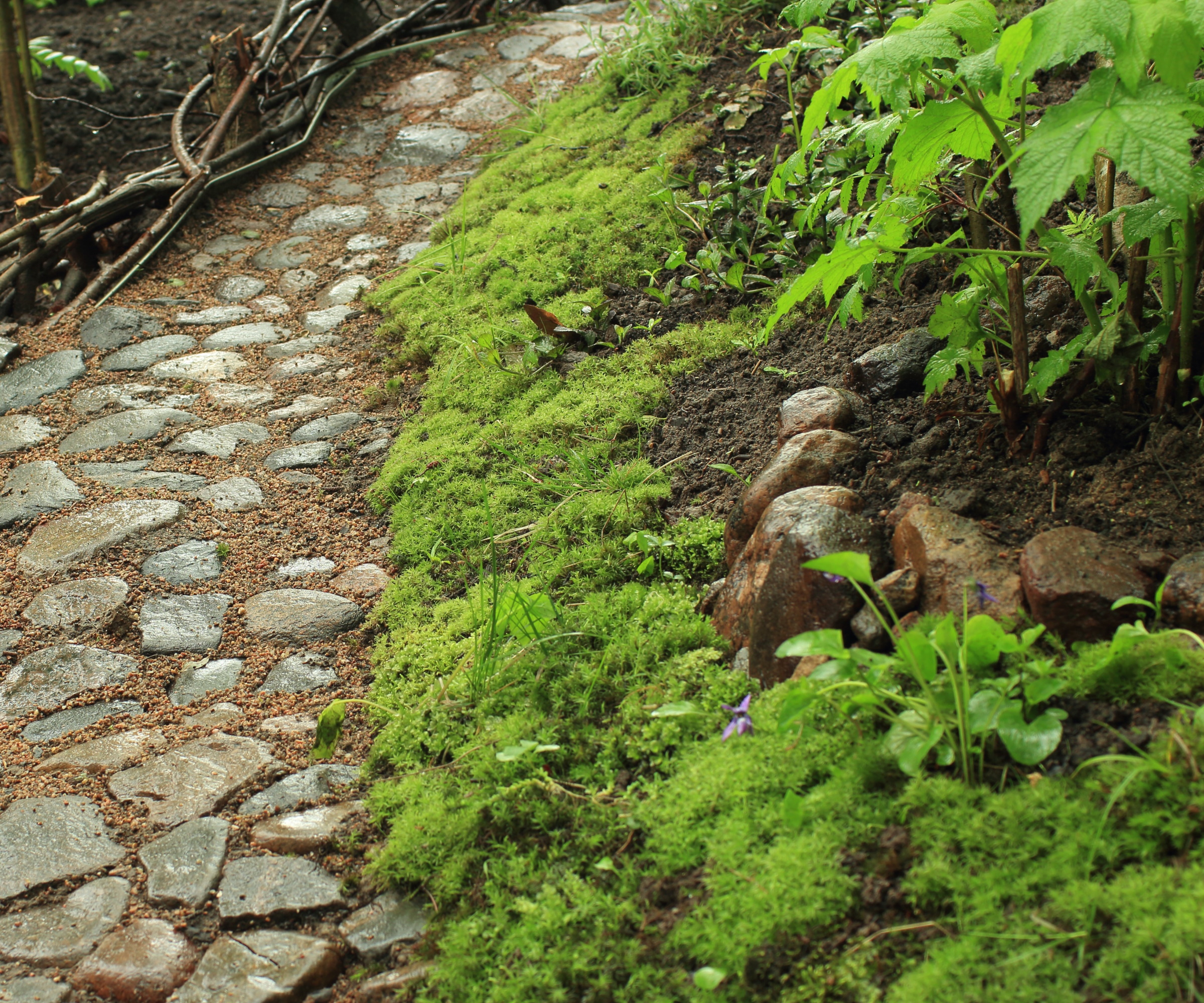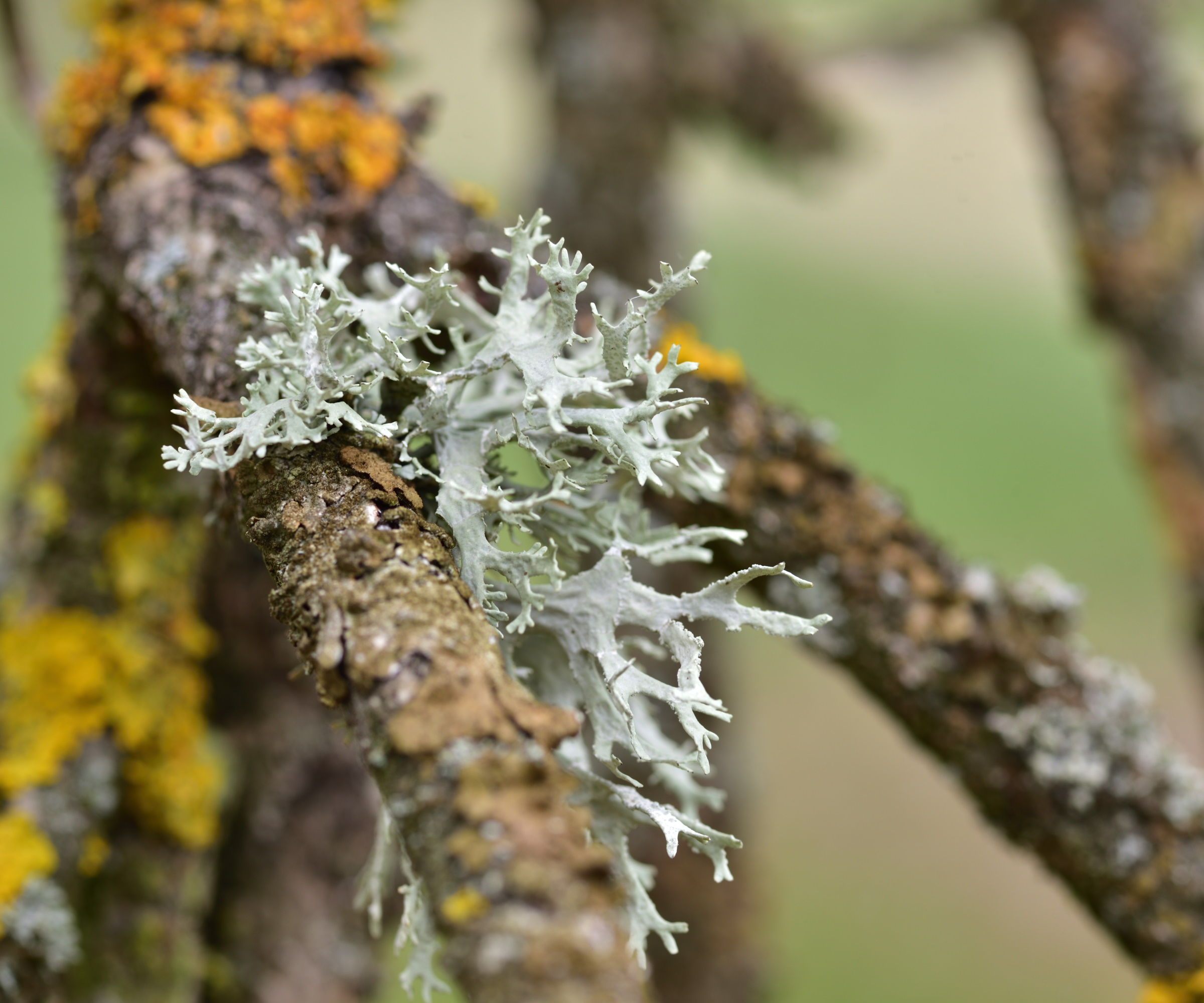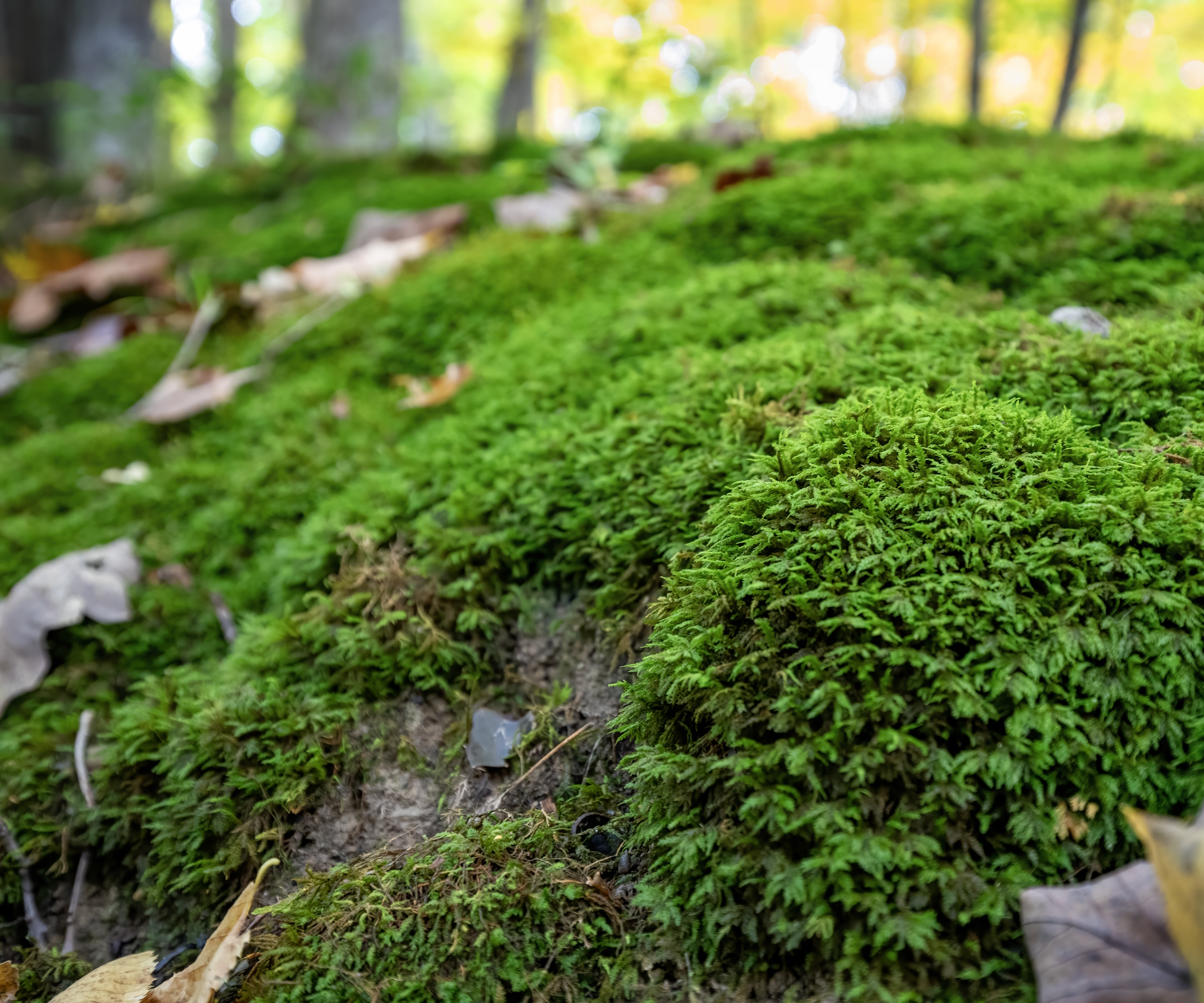Lichen vs moss – what's the difference?
Each bringing vibrant color to your yard, there's no denying lichen and moss are easy to mix up


One thing all gardeners face at some point is unintentional plants growing in unintentional places. Moss, for example, often takes up residence in shaded, damp corners of your yard. The only problem? Lichen is a type of plant that has a similar nature. So, how do you tell if it's lichen or moss growing in your yard?
Although not always grown purposely, both of these plants are beautiful in their own way. Many gardeners even choose to landscape with moss to make the most of this vibrant green, hardy ground cover growth. Similarly, it's not uncommon for gardeners to allow lichen to thrive in their outdoor spaces, with its unique colors and shapes enhancing planting.
Whether you want it to keep growing in your yard or want to get rid of moss or lichen, it's important to know whether it's lichen or moss that you're dealing with. Here, we've put together a guide to lichen vs moss so you can determine what's growing in your yard.

What's the difference between lichen and moss?
If you have shade garden, you might have noticed moss or lichen growing there. Both of these types of plants thrive in similar environments and have similarities in their look that makes it hard to differentiate them. That's why we've pulled together a few key points that makes them different:
Differences in appearance

Lichens grow in a range of colors and shapes
At first glance, it can be easy to mistake lichen for moss. The beauty of lichens is that they come in a wide range of colors and textures, including yellow-green hues reminiscent of what you might see in a moss garden. However, take a closer look and you'll see some interesting differences.
'Lichens come in many colors (yellow, red, orange, blue and grey) and a few different shapes,' says horticulture expert Scott Seargeant. 'In comparison, mosses generally grow in clumps that are green when moist,' he notes.
Of course, it's much easier to see red, blue and grey lichens and instantly recognize it as different to moss, but dehydrated moss can turn a similar yellow hue to some types of lichen.
The second point of call to identify lichen vs moss is looking at the shape and texture of the plant.
'Lichens are much harder and many are flatter than moss, although some lichens are stringy,' says Scott. 'Lichens on rocks are flat, on trees they are stringy,' he explains.
Moss, on the other hand, is much softer and spongier than lichen. 'Moss generally grows up to two inches tall,' says Scott.
With so many types of lichens out there, you can use Lichens of North America from Amazon to identify which one you have in your yard.

Scott is an International Consulting Arborist specialising in diagnosing tree conditions, providing treatment, recommendations, selecting appropriate trees for planting, and offering guidance on post-planting tree care. His services encompass tree selection, specialized fertilization, pruning, irrigation system improvement, root zone management, and pest and disease control.
Differences in growing habit

Moss can be used in a number of ways in the yard
The appearance of lichen vs moss isn't the only thing to give away which is which. You can also investigate their growing habit to tell the difference.
'Moss grows in moist shady areas,' Scott notes. 'It is often an understory plant. They also grow on rocks, trees, concrete, walls and other moist shady places,' he adds.
Many gardeners choose to grow moss in their yard as a ground cover plant for shade. They're versatile plants to use and, as Scott notes, can also grow vertically on trees and walls.
Lichens have a slightly bit different growth habit. While Scott notes they are also found on 'rocks, trees, walls, and roof tops,' it's their structure that makes them unique. This is because lichens are actually two plants living as one - algae and fungus growing together in one colony. Although not impossible, you're less likely to find lichens growing on the ground.
Because of the algae element of lichens, they can even sometimes be found growing on barnacles in marine environments. But, you're unlikely to find them in a garden pond or alongside green algae in a pool.
Both moss and lichens also do not have roots. Just like orchids, lichens and moss and considered epiphytes, growing on other plants - and sourcing nutrients from the air like on tree bark. They can also both be known to spread in your yard.
FAQs
How to get rid of lichens
If you have lichen growing in your yard and want to get rid of it, you can use a homemade solution. 'One part bleach and 10 parts water will kill lichen. There are also some commercial products available to kill lichens and vinegar will work, too,' says horticulture expert Scott Seargeant. This vinegar weed killer from Amazon will work well, for example. Always be aware of the chemicals you release into your backyard environment when using different commercial products.
How to get rid of moss
There are a few ways to get rid of moss in lawns, get rid of moss on a patio, or elsewhere. This includes removing the moss and sealing where it was growing, or using commercial products - like this moss killer from Amazon. It's wise to read manufacturer labels of any chemical products you use to familiarize yourself with the chemicals being released into your yard.
A quick tip for gardeners wanting to grow more lichens in their yard: 'Mix yogurt with water 1:1 and use a paint brush to apply it to boulders that already have lichens,' says Scott. 'They will spread and fill in faster,' he explains.
If after reading our guide you think it's neither moss or lichens growing in your yard, you could be facing a different type of algae. This is especially true if it's found on hard surfaces. Read how to remove algae from a fence for more advice.
Sign up to the Homes & Gardens newsletter
Design expertise in your inbox – from inspiring decorating ideas and beautiful celebrity homes to practical gardening advice and shopping round-ups.

Tenielle is a Gardens News Writer at Homes & Gardens. She holds a qualification in MA Magazine Journalism and has over six years of journalistic experience. Before coming to Homes & Gardens, Tenielle was in the editorial department at the Royal Horticultural Society and worked on The Garden magazine. As our in-house houseplant expert, Tenielle writes on a range of solutions to houseplant problems, as well as other 'how to' guides, inspiring garden projects, and the latest gardening news. When she isn't writing, Tenielle can be found propagating her ever-growing collection of indoor plants, helping others overcome common houseplant pests and diseases, volunteering at a local gardening club, and attending gardening workshops, like a composting masterclass.
-
 7 of the best tomatoes for growing in pots - expert growers pick their top varieties ideal for large harvests from containers
7 of the best tomatoes for growing in pots - expert growers pick their top varieties ideal for large harvests from containersYou can enjoy bumper homegrown harvests in small spaces
By Drew Swainston Published
-
 Drew Barrymore creates a 'balanced' kitchen in 4 easy steps – her rules will make your small, compact countertops feel beautiful
Drew Barrymore creates a 'balanced' kitchen in 4 easy steps – her rules will make your small, compact countertops feel beautifulDrew proves that with the right styling (and chic appliances), you can make even the smallest of kitchens look harmonious
By Hannah Ziegler Published